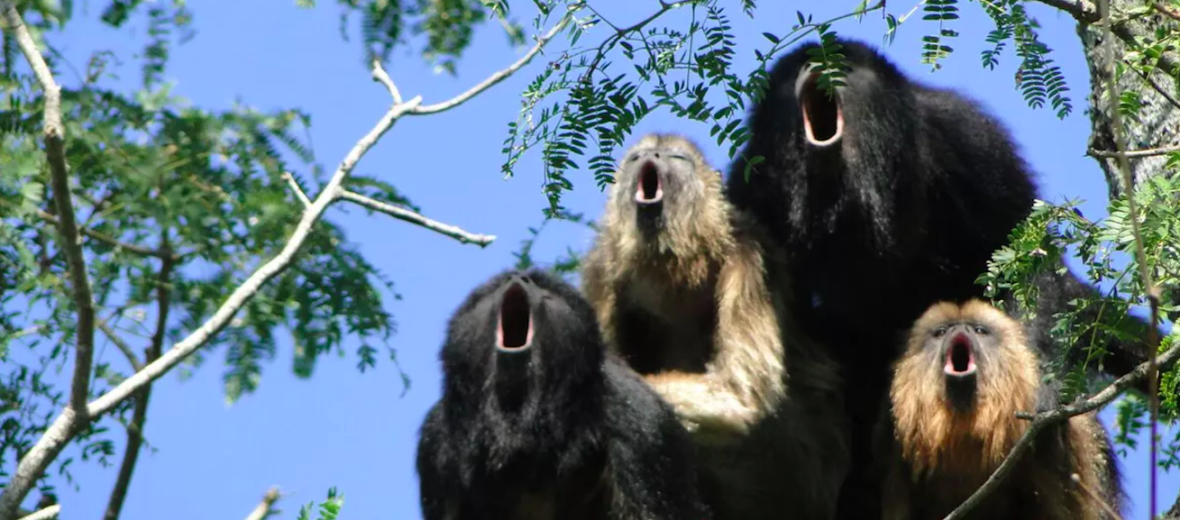
The howler monkey is a new world monkey residing in Central and South America. These critters are appropriately named for their cries. When they let lose in a troop of monkeys they can be heard a great distance. There are 15 species with 7 subspecies known to date. All species of howler monkey are listed as Least Concern – Endangered by the IUCN and their numbers are steadily decreasing. This is due to habitat destruction at the hands of mining, logging, and agriculture. They are also affected by hunting and wildfires.
First the Stats…
Scientific name: Alouatta caraya
Weight: Up to 22 lbs.
Length: Up to 3.7 feet
Lifespan: Up to 20 years
Now on to the Facts!
1.) Howler monkeys are the largest of all the known new world monkeys!
2.) The howler monkey has a prehensile tail (a tail that can grip) that it uses as an extra arm, for balance, and to hang from branches.
3.) These Monkeys live in troops of approximately 10 – 15 members.
4.) Each troop contains about 1 – 3 males.
5.) The howler monkey troop has a complex hierarchy which is used to keep everyone in check.
But wait, there’s more on the howler monkey!
6.) Howlers are omnivores (eat both plant and animal matter). They prefer to eat leaves, nuts, and berries from the trees they reside in. However, they will also eat insects and eggs.
7.) The howlers don’t have a mating season. They mate all year, as long as there is food and a safe place to live!
Did you know…?
When they let loose a call they can be heard up to 3 miles away!
8.) After 180 days, 1 baby is born. The baby grows quickly and is cared for and educated by the mother.
9.) After 1 year, the baby howler monkey has to leave the troop.
10.) Both male and female howler monkeys have what is called trichromatic color vision, which allows them to see multiple colors. This aids in finding ripe fruits.
But wait, there’s still more on the howler monkey!
11.) Males mark their territory via scent marking and large dung (poop) piles.
Did you know…?
These monkeys are known for emitting the loudest call of all primates in the world, which is made possible by an egg-shaped hyoid bone.
12.) Howler monkeys are polygynandrous (males and females mate with multiple partners).
13.) Howlers engage in allomothering. This is where all the females in the troop participate in raising the infants.
14.) They spend up to 70% of the day resting so they can digest their leafy meals.
15.) With their incredible sense of smell, they can detect food up to 1.24 miles away.
Now a Short Howler Monkey Video!
Also, check out the Critter Science YouTube channel. Videos added frequently!
Want to suggest a critter for me to write about? Let me know here.




Leave a Reply